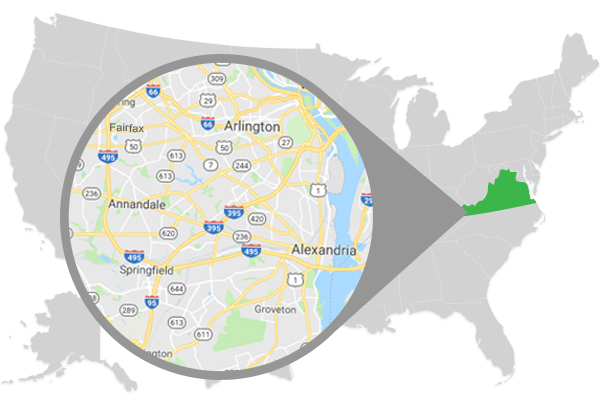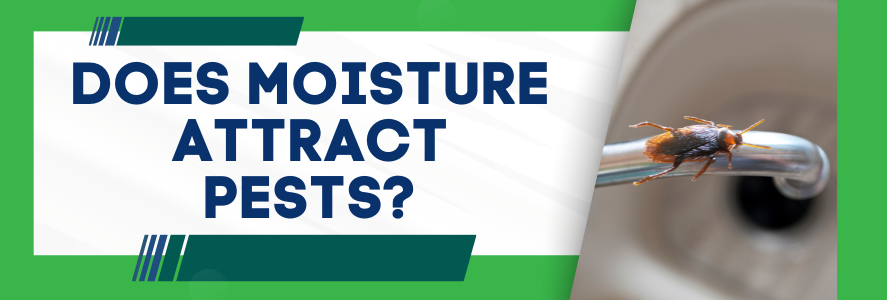
Does Moisture Attract Pests?
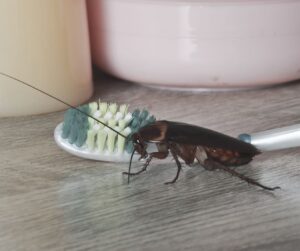
Another pest attractant that may come to mind is shelter, as your home provides safety from the elements and predators for pests dwelling inside. However, a factor you may not consider is moisture. All living things need a source of water, so a source of moisture on your property can make a wandering mouse or ant scout decide to set up a base in your home.
Crawl spaces are one of the biggest sources of moisture and pest problems in the home. Large, unsealed crawl space vents provide a perfect entry point for rodents, termites and insects. Un-encapsulated crawl spaces without a vapor barrier or sump pump leaves a crawl space vulnerable to flooding, mold and mildew.
Moisture and Rodents
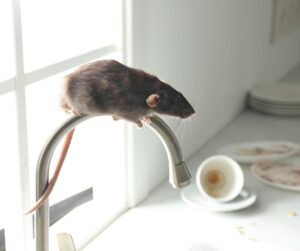
Crawl spaces are an oft-overlooked source of moisture and water damage in your home. If your crawl space is un-encapsulated with a dirt floor, water vapor can rise from groundwater and form standing water in your crawl space. Heavy rain can also lead to flooding and standing water in your crawl space, especially if your vents are unsealed. All of these will provide rodents with a steady water supply, which will incentivize them further to stay in your home.
Moisture and Insects
Insects, like all life forms, are attracted to moisture. Moisture in your crawl space from flooding and groundwater can attract them, and most insects need even less water to survive than mice.
Humidity in the air creates ideal conditions for insects, as most insects don’t need to actually drink standing water, but instead will absorb water through their skin. Dark areas with moisture and humidity are perfect for insect pests like cockroaches and silverfish, and a humid, un-encapsulated crawl space will make the perfect breeding ground for them.
Moisture and Termites
Termites are insects that need moisture to prevent themselves from drying out. Subterranean termites need to be surrounded by moisture at all times, so a humid, wet crawl space is their ideal home.
In order to reach wood from the soil, termites will build tightly packed tunnels of mud, excrement and saliva called “mud tunnels” to keep their bodies moist. These tunnels reach upwards, from the wet soil to the nearest source of wood where they can begin feeding on the cellulose within.
A crawl space with a dirt floor is very inviting to subterranean termites, as they can reach up directly through the crawl space to reach the wooden structures inside the house.
Crawl Space Vent Covers
Due to antiquated building codes, many houses built with crawl spaces were mandated to have large vents to the outside. Moisture is often the biggest issue with crawl spaces, so in the 1950’s, people thought that venting to the outside would solve the moisture problem. Instead, this design actually made it EASIER for moisture and humidity problems to develop within a crawl space. Therefore, if you have an older home, you likely have crawl space vents, which can cause big problems down the line.
Open crawl space vents will draw the humid air inside, where it will begin to form water droplets on the surfaces within your crawl space via the property of condensation. The water from the humid air inside the crawl space can create water damage like mold and mildew. These watery, humid conditions will also draw in pests like rats, mice, cockroaches, silverfish and termites. When it comes to pest control, one of the biggest things you need to look for are entry points.
Entry points are where the pests are actually entering your home. Two wide-open vents in the bottom of your house, easily accessible by even underground dwelling insects like subterranean termites, are the first place you want to look when determining entry points. These pests can easily make their way inside through the vents, where they can gain ingress to the other parts of the house. In order to protect your home from rats, mice, cockroaches, silverfish, termites and more, it’s always recommended you get your crawl space vents sealed.
A crawl space waterproofing company like Summit Waterproofing Solutions can provide you with the best crawl space vent sealing service in the Alexandria, Arlington, Fairfax and Fredericksburg area. Our solutions include warranted and patented products that are state-of-the-art for drying, sealing, and waterproofing your crawl space.
Crawl Space Encapsulation
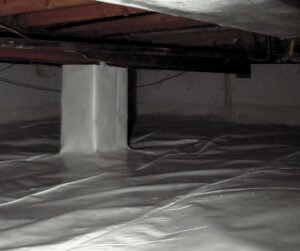
Another important part of crawl space encapsulation is the installation of a sump pump. Sump pump systems will redirect any excess or standing water from a crawl space, and pump it away from the home where it can empty out. Sump pumps prevent flooding in your crawl space, as well as any standing water. The final part of crawl space encapsulation is in the installation of a dehumidifier. Dehumidifiers work to remove the humidity from the air, which can drastically improve air quality and hinder the growth of mold and mildew inside the crawl space.
By encapsulating the crawl space, you can prevent flooding, standing water, the growth of mold/mildew, the humidity in the air and the water vapor rising from the ground. Reducing the moisture in your crawl space will help deter pests like rats, mice, cockroaches, silverfish and termites. If you need a crawl space encapsulation done in the Fairfax, Alexandria, Arlington or Fredericksburg areas, contact Summit Waterproofing Solutions today at 703-291-1516 or fill out a contact form.


